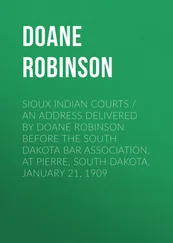2 2. Jacob Carruthers, Mdw Ntr: Divine Speech: A Historiographical Reflection of African Deep Thought from the Time of the Pharaohs to the Present (Karnak House, 1995), 50–2.
3 3. Cedric Robinson, Black Marxism: The Making of the Black Radical Tradition (University of North Carolina Press, 2000), xxx.
4 4. John K. Thornton, Africa and Africans in the Making of the Atlantic World (Cambridge University Press, 1992); Linda M. Heywood and John K. Thornton, Central Africans, Atlantic Creoles, and the Foundations of the Americas, 1585–1660 (Cambridge University Press, 2007); Michael Gomez, Exchanging Our Country Marks: The Transformation of African Identities in the Colonial and Antebellum South (University of North Carolina Press, 1998); and Robert Farris Thompson, Flash of the Spirit: African and Afro-American Art and Philosophy (Vintage, 1983), 103–58. Cedric found the Bakongo conception useful for understanding questions of the state. See Cedric Robinson, The Terms of Order: Political Science and the Myth of Leadership (University of North Carolina Press, 2016), 225n40.
5 5. Carruthers, Mdw Ntr, 65–87.
6 6. On the Black radicals discussed in Black Marxism, Robinson would write, “But always we must keep in mind that their brilliance was also derivative. The truer genius was in the midst of the people of whom they wrote.” Black Marxism, 184.
7 7. Erica Edwards, “Foreword,” in Robinson, The Terms of Order, ix.
8 8. Damien M. Sojoyner, “Dissonance in Time: (Un)masking and (Re)Mapping of Blackness,” in Gaye Theresa Johnson and Alex Lubin (eds), Futures of Black Radicalism (Verso Books, 2017), 60.
9 9. Robinson, Black Marxism, 177.
10 10. Michel-Rolph Trouillot, Silencing the Past: Power and the Production of History (Beacon Press, 1995), 82.
11 11. Sylvia Wynter, “Unsettling the Coloniality of Being/Power/Truth/Freedom: Towards the Human, After Man, Its Overrepresentation – An Argument,” CR: The New Centennial Review 3 (2003): 257–337; and Sylvia Wynter, “A Black Studies Manifesto,” Forum N. H. I.: Knowledge for the 21st Century 1(1) (1994): 3–11.
12 12. Hans Ruin, “Time as Ek-stasis and Trace of the Other,” in Hans Ruin and Andrus Ers (eds), Rethinking Time: Essays on History, Memory and Representation (Soderton, 2011), 54–5. See also Reinhart Koselleck, Futures Past: On the Semantics of Historical Time (MIT Press, 1985).
13 13. Johannes Fabian, Time and the Other: How Anthropology Makes its Object (Columbia University Press, 1983), 2–6.
14 14. Fabian, Time and the Other, 6–21.
15 15. Robinson, The Terms of Order, 6.
16 16. A. Sivanandan and Hazel Waters, “Introduction,” Special Issue, “Cedric Robinson and the Philosophy of Black Resistance,” Race and Class 47 (October 2005): iii.
17 17. Chuck Morse, “Capitalism, Marxism, and the Black Radical Tradition: An Interview with Cedric Robinson,” Perspectives on Anarchist Theory (Spring 1999): 8.
18 18. Robinson, The Terms of Order, 215. On notions of “improvement,” see Stefano Harney and Fred Moten, “Improvement and Preservation; Or, Usufruct and Use,” in Johnson and Lubin (eds), Futures of Black Radicalism, 83–91.
19 19. On Black Study, see Stefano Harney and Fred Moten, The Undercommons: Fugitive Planning and Black Study (Minor Compositions, 2013) and Ashon Crawley, Blackpentecostal Breath: The Aesthetics of Possibility (Fordham University Press, 2016), 237. The methodological implications for that mode of critique and the possibilities inherent in that intellectual work are connected to the work of Cedric Robinson as well. See Joshua Myers, “The Scholarship of Cedric J. Robinson: Methodological Implications for Africana Studies,” Journal of Pan African Studies 5 (June 2012): 46–82; Greg Carr, “What Black Studies is Not: Moving from Crisis to Liberation in Africana Intellectual Work,” Socialism and Democracy 25 (March 2011): 178–91; Fred Moten, Black and Blur (Duke University Press, 2017), 1–27; and my Of Black Study (Pluto, forthcoming).
20 20. Sojoyner, “Dissonance in Time,” 65–7.
21 21. Robinson, Black Marxism, 71.
22 22. My thinking here aligns with Imani Perry, “Black Studies in the Tradition, for the Future,” 67th Charles Eaton Burch Lecture, Howard University, March 19, 2019.
23 23. Robinson, Black Marxism, 170.
24 24. Ibid., 168–71.
25 25. Wendy Brown, Undoing the Demos: Neoliberalism’s Stealth Revolution (Zone Books, 2015).
26 26. Edwards, “Foreword,” xv.
27 27. Cedric Robinson, Forgeries of Memory and Meaning: Blacks and the Regime of Race in American Theater and Film before World War II (University of North Carolina Press, 2007), xiii–xiv.
28 28. Christina Sharpe, In the Wake: On Blackness and Being (Duke University Press, 2016), 13.
29 29. Cedric J. Robinson, “What Is to Be Done? The Future of Critical Ethnic Studies,” plenary session, Critical Ethnic Studies Conference, Chicago, September 21, 2013, https://www.youtube.com/watch?v=tKnf100jCFI.
When he was asked, Cedric cited his maternal grandfather, Winston “Cap” Whiteside, who for much of his life worked as a janitor, as a primary intellectual influence. 1Intellectual genealogies, like familial genealogies, evoke relationships across time, premised on cultural or philosophical ideals that determine the nature of those relations. In most academic treatments, conceptions of intellectual genealogies privilege intellectuals in the “formal” sense, even when those presences are not acknowledged or are obscured in the citation practices that accompany a text. But Black thought has always taken seriously the intellectual influences that exist beyond the patina of scholarly legitimacy and in locations that are unbound by relationships to conventional western educational environments. Blackness, insofar as it is a repository of African cultural meanings, produces another way to think genealogy, intellectual or otherwise. 2In Cedric’s case, there are many instances that point to the imprint that Cap – who never wrote an academic text – had upon his conception of Black being, his orientation toward the meaning of Black radicalism. And in one important case, a direct citation – a natural inclusion of Cap as part of that tradition – was present all along.
In Black Movements in America , a text that deftly traces the continuity of mass Black political action throughout the history of the American project, Cedric contextualizes the “push” factors of early twentieth-century Black migration in the United States with a story about his own grandfather. One day, sometime in 1927, the manager of the Battle House Hotel – a white elite enclave of Mobile, Alabama – attempted to “exercise his sexual privileges,” with a maid named Cecilia, Cap’s wife. According to Cedric’s account, “When Cap was told, he returned to the Battle House that evening, beat the manager up, and hung him in the hotel’s cold storage.” A white hotel manager, heir to the long tradition of white sexual violence against Black women, was “chastened” by a Black man, heir to a tradition of resistance to that imposition. That tradition thrived among a significant segment of Black Alabama, as well as the Black South writ large, and through both word and deed asserted that white supremacist violence against Black women were terms of order that would not be accepted. 3Resistance, however, also meant that Cap Whiteside could no longer stay in Mobile. Concluding the story, Robinson added: “In a few days, Whiteside headed for Oakland, California. When he earned their fare, he sent for his family: Cecilia and his daughters, Clara, Lillian, and Wilma.” 4It was in Oakland that one of those daughters, Clara, gave birth to Cedric a little over a decade later.
Читать дальше












